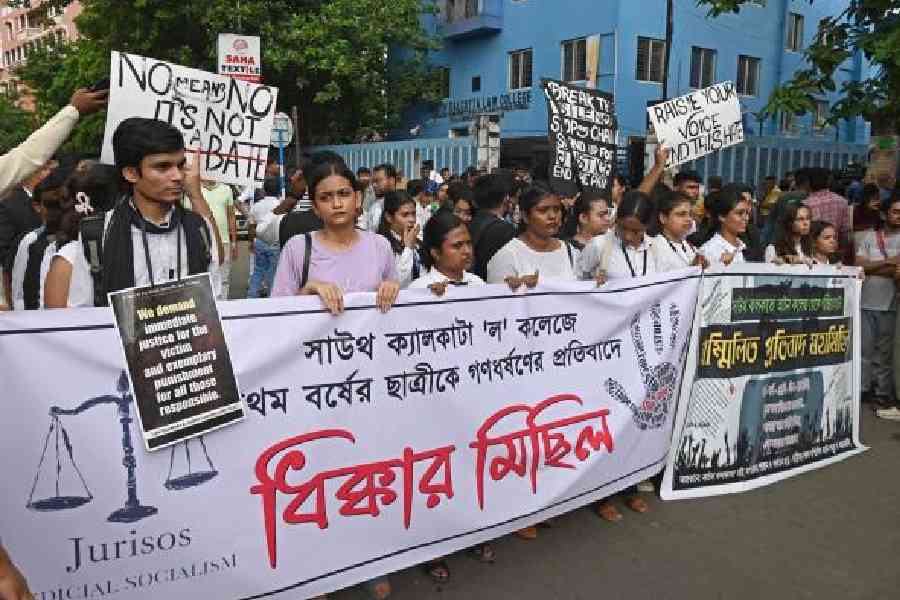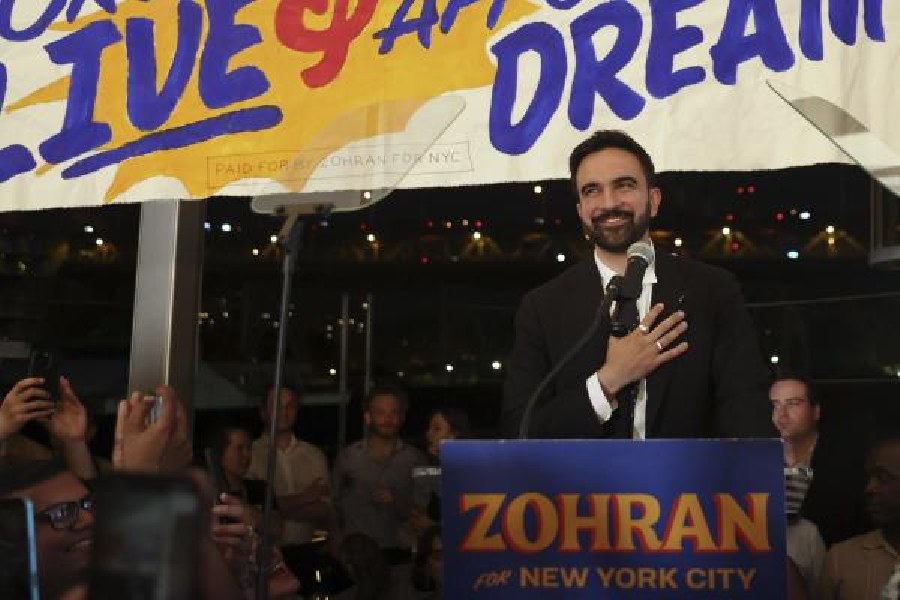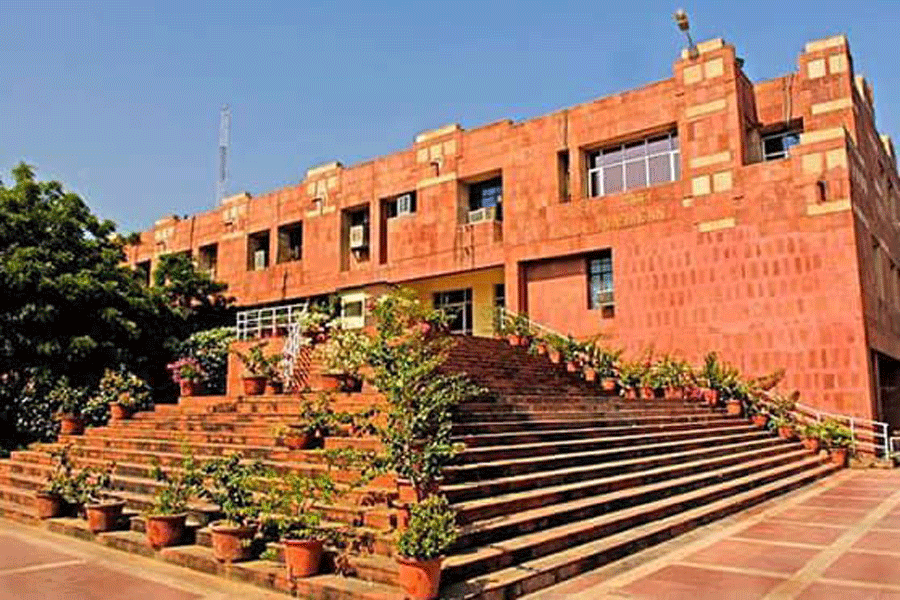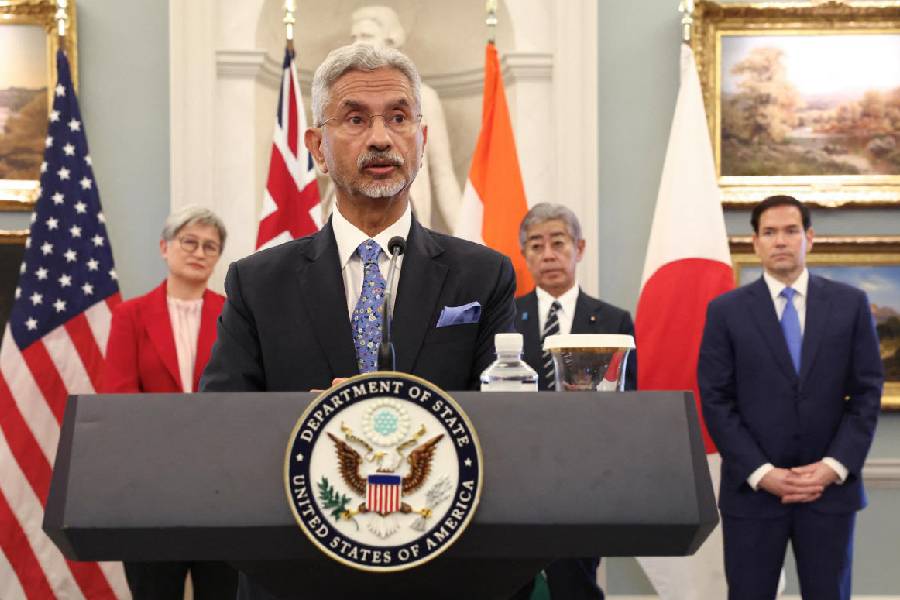

Pics: Manasi Shah
Ruhaniyat, the Urdu word for soulfulness, describes the emotions jostling within as one stands in the well of the olden structure in central Calcutta's Chitpur area and looks skywards, where hues of orange are about to merge with the blues to announce dusk.
The entrance to the building is all but hidden by a paraphernalia of political banners, posters and hoardings. The rectangular board atop the entrance has "Salehjee Musafirkhana" written in three different languages - English, Bengali and Urdu - one out of compulsion, one for necessity and the last for the sake of tradition.
The literal translation of musafirkhana would be travellers' lodge, guesthouse, hostelry, inn... And yet it is not. It is not just about the checking in and the checking out. It is not just a stopover; it is a hyphen connecting journeys. Musafirkhana is redolent with the joy of diverse and disparate peregrinations.
The three-storey building has pillars with a dark grey chevron pattern resembling a regular heartbeat. The floors are red oxide, smooth and cool to touch. The louvered sunshades, only half covering the balcony on each floor, are wood in faded turquoise. The railings, couplets in iron, flirt with the sunlight, their effect khwabeeda or dreamy. Breaking all subdued tones are bursts of red and yellow on the clothesline on the topmost floor.
It is 5 in the evening. The doors of the common room on the first floor are a soothing bottle green and ajar, not unlike the people inside. These men must have just arrived from some place, dead tired. Their luggage lies hither thither, much like themselves, splayed on mats in deep slumber. The soft evening light streams in through arched stained glass windows - green, red and yellow - missing a pane or two in places.
The musafirkhana was established in 1889 by Ebrahim Sulaiman Salehjee and Musaji Ahmed Salehjee of the Sunni Bohra community who had come to Calcutta from Surat's Kathor village. Musaji's great-grandson Mohammed Ibrahim Ameen Salehjee, the present secretary of the place, tells The Telegraph, "We were billionaires at that time and had shifted here seeking to expand the business. But my great-grandfather wanted to create something people would remember him by. That is why he built this place." He adds, "In those days, there were no other hotels or lodges not only in this area but in all of Calcutta."
Salehjee shows an old photograph of the place, from 1947. He says, "This picture was taken during the Bengal riots. Many Muslims from all over the city took refuge here."
For the first 100 years, the musafirkhana would not charge even one paisa from anyone. Thereafter, a nominal fee was levied.
The place has 70-plus rooms and can accommodate as many as 1,500 guests. But even that is not enough during Haj season. Says Salehjee, "Despite the government arranging accommodation for the pilgrims, those from the poorer sections prefer staying here. In fact, there have been times when we have had to put up a tent on the terrace to provide lodging. We don't refuse Haj pilgrims and during the season, we do not allow anybody else to stay."
Abdul Salam from Bareilly is here on a business trip. He is staying on the first floor, which is where all the single men check in. In the room adjoining his are four people, all from different parts of Uttar Pradesh. One of them, Khurshid Alam, tells us, " Yahaan pe sab log apne jaise lagte hain. Hotel mein jaayenge toh ek hi room mein akele rehna padega. Yahaan par naye logo se milna ho jaata hai, baat cheet ho jaati hai." He is basically recommending the familial ambience of the musafirkhana, the wealth of interactions that cannot be accrued from a sanitised stay in some hotel room.
Some renovation work is going on on the second floor. Apart from the common room, most of it is empty. On the staircase leading to the floor above, there is a board that reads: Gair mard ko upar jana mana hai. It is the only floor that has family rooms. The notice written in English is not as nuanced: Do not go upstairs. This is the liveliest and most colourful floor of all. Children run about playing catch-catch as their mothers comb their hair, put out clothes to dry, all the while exchanging pleasantries, swapping tales. A family of seven from Malda busily tucks into a meal of rice and dal. The little ones eat puffed rice heaped on a newspaper spread on the floor. They are here to get their visas for Bangladesh. And then, like all those others before them and those many that will come after, they too will take their leave.
Not for nothing did the poet write - Hava par hai ye buniyad-e-musafir khana-e-hasti. Na thehra hai koi yahaan aye dil-e-mahzun na thehrega...










